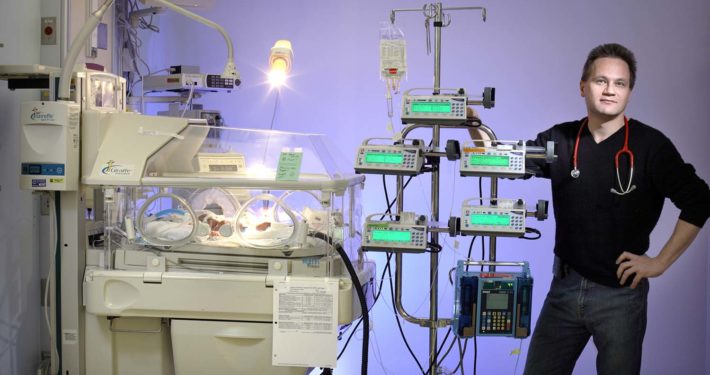The Independent Pediatrician interviewed Michael Warner, D.O., CPC, CPCO, CPMA, the president of non-profit Patient Advocacy Initiatives, about the ways that Patient PreHistory will improve the quality of healthcare.
What is your background and how did you first become interested in Patient PreHistory?
As a caregiver, I saw a dramatic difference between what occurred during a medical encounter versus what was documented in the medical record. It is easy to blame the provider for not documenting all of the details, but is it really reasonable to expect the medical provider to be a skilled stenographer? As a certified professional coder and medical auditor, it makes sense to me to allow the patient to answer the near 30 history questions as defined and structured by the Centers for Medicare and Medicaid Services (CMS).
To support the patient’s federal right to amend and access the record, nonprofit Patient Advocacy Initiatives was formed in 2015. That same year, we conducted clinical research to validate a patient authored PreHx and the resulting patient co-authoring of the medical record.
As a physician, I am driven to help improve the patient experience and the medical provider experience. Our transition from paper to electronic health records has placed a high amount of administrative burden and computer tasks on providers that distracts from the patient in the room. I believe patient co-authoring of the history, with the use of a PreHx, can allow the patient and provider to work together to efficiently gather information. I believe, as our research showed, that this type of cooperative partnership between patients and providers results in better care.
Your nonprofit promotes the patient use of a PreHistory (PreHx) in preparation for a medical encounter. How could this improve healthcare?
Patients and providers are put in a near impossible position during a medical encounter. 1995 and 1997 CMS Evaluation and Management Documentation Guidelines have defined and structured about 30 questions to comprise a history. During the time constraints of a 15-minute office schedule, a medical provider does not have time to ask each question, wait for a response, and then type/dictate answers into the computer. Our PreHx is a replica of all of the history questions in the E/M Guidelines. By completing a PreHx at home, the patient can consider each question, reflect and produce an appropriate answer. This helps prepare the patient for the visit and also supplies answers for the medical provider.
Your PreHx is designed to allow the patient to co-author the medical record. Is this legal?
Yes, it is legal per multiple laws. The Standards for Privacy of Individually Identifiable Health Information of 2001, also known as the HIPAA Privacy Rule, grants patients the right to request to amend their health record [45 C.F.R § 164.526]. A patient can submit a PreHx as a written request to amend the health record. From the medical provider point of view, the Medicare Access and CHIP Reauthorization Act of 2015 (MACRA) gives credit to providers who accept patient-generated health data (PGHD). Our government includes a patient-authored history as a form of PGHD.
How can parents or caregivers help document an accurate PreHx for children who are not old enough to write one themselves?
A patient or caregiver can ask a child the PreHx questions and enter the responses. PreHx questions, reflective of the official CMS history, ask basic questions, such as: “What makes your problem better or worse?” (modifying factors) and “Where is your problem located on the body?” (location). A small child with an ear infection may answer: “My right ear.” To what makes it better or worse, the child may answer: “Nothing.”
If the child is an infant, he or she may not yet be verbal. In this case, the parent can author the PreHx: “Tugging on right ear” (location), “Less crying after dose of Tylenol, more crying if right ear is touched” (modifying factors).
Both our paper and digital PreHx’s offer examples to help formulate answers. The main objective is to help your medical provider assemble all of the information so time spent at a medical encounter can be directed more toward examination and medical decision making, rather than dominated by basic information gathering and data entry.
Do you have any proof that a PreHx can improve healthcare metrics?
Yes. In February 2017, we published a clinical research paper showing that use of a PreHx raised the patient’s experience to a satisfaction level of 97 percent.1 Patients reported feeling better heard and understood. They also appreciated being given a chance to co-author their medical record. Use of the PreHx also improved the efficiency of health information flow as all encounter notes were completed by the end of the face-to-face visit.
Were patients able to read the results of their effort to co-author the medical record?
Yes. At the checkout window, each patient in the study received a printed copy of the electronic health record encounter note. They were instructed to go home, read their health record and score their experience with an anonymous survey.
How did the use of a PreHx change your experience as a clinician?
As the family doctor who cared for the patients in the study who submitted a PreHx, it was a game changer. Our research protocol allowed medical staff members to use the PreHx to populate the appropriate history fields in the EHR encounter note. This allowed me to enter the room, greet the patient, and then read the patient’s subjective story. In less than a minute, I was able to understand the patient’s concerns as a case. I was able to reflect what I learned by asking the patient: “You are telling me that this, this and this are going on?” I was able to ask a few more detailed questions and then conduct a pertinent examination. Because the patient and provider were highly engaged, medical decision making readily transformed into shared decision making.
Have you had any pediatric experience with the PreHx?
Yes, two patients, ages 14 and 15, completed a PreHx in our study. Each of these teenagers completed their own PreHx without the help of their parents. As I reviewed what was documented in the record and conducted the encounter, both sets of parents proudly watched their children engage. I believe an open field of research awaits the study of the pediatric patient as a patient advocate.
If a patient wishes to complete a PreHx, how much does it cost?
Our paper and digital PreHx’s are free of charge and can be found at www.PatientAdvocacyInitiatives.org and www.PreHx.com. We also have free educational videos and an audio download to help educate why it is important to access and amend your own medical record.
How do you see healthcare changing in the near future?
The healthcare experience for patients and providers is about to radically change. Patients will soon engage with their medical records the way someone currently updates Facebook and LinkedIn profiles. Providers will soon shed roles as stenographers and data entry clerks and regain the privilege and honor of practicing medicine. Patient roles will encourage more participation and responsibility. I believe better healthcare is coming soon.
[1] Michael J. Warner et al., “Use of Patient-Authored Prehistory to Improve Patient Experiences and Accommodate Federal Law.” The Journal of the American Osteopathic Association, Vol. 117 (February 2017): 78-84 doi:10.7556/jaoa.2017.018 http://jaoa.org/article.aspx?articleid=2599978 ↑









